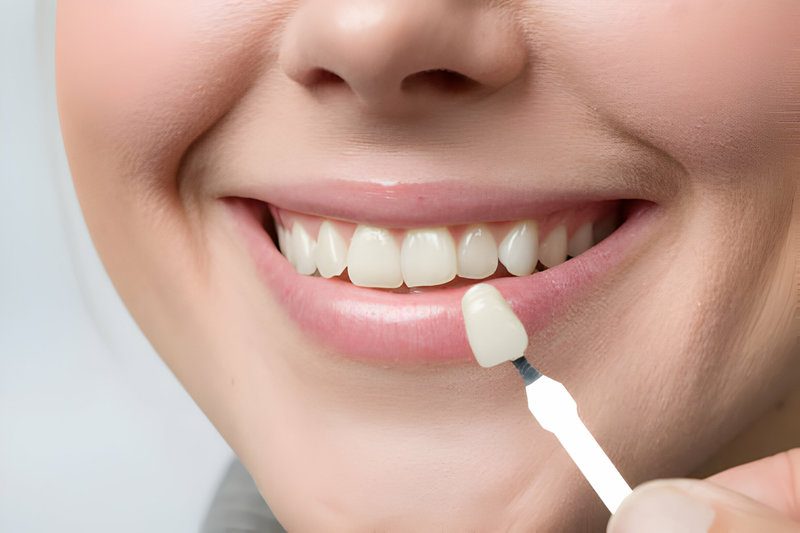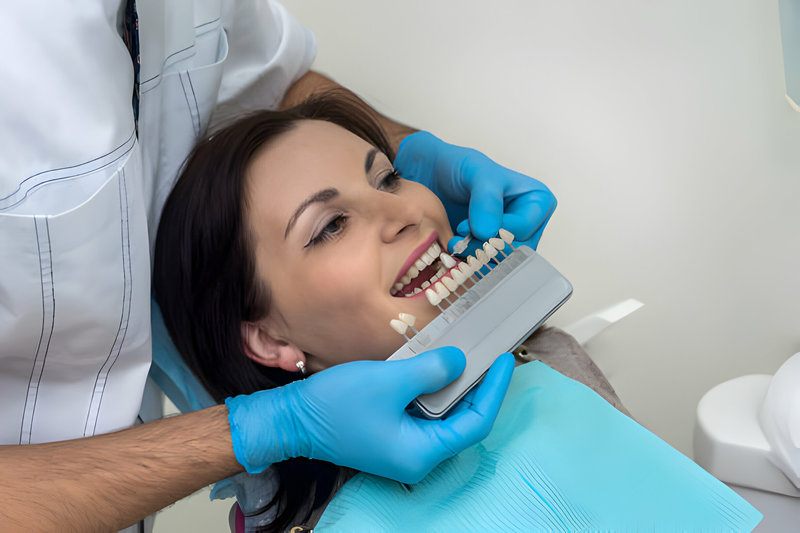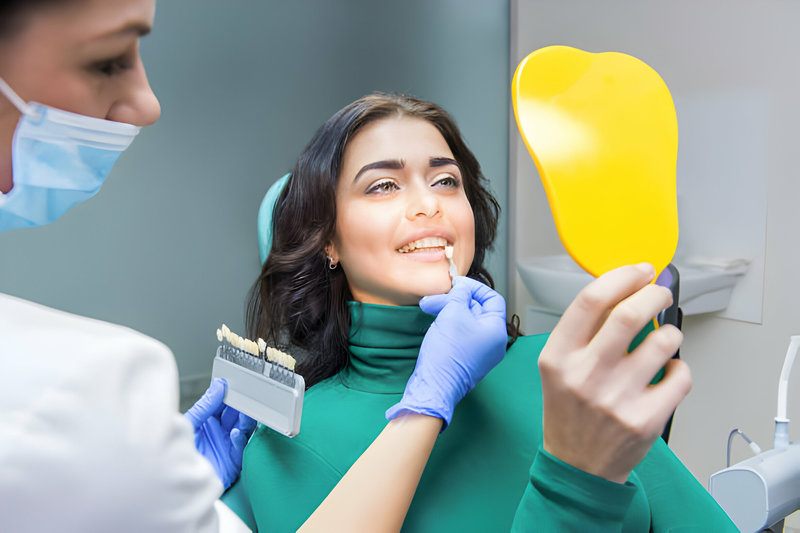
North Carolina Veneers Guide: Achieving Your Dream Smile
Summary:
Given our lifestyle choices and oral health, our teeth can become chipped, discolored, or misaligned as we age.
But have you ever wondered how celebrities maintain their pearly whites despite living such a busy lifestyle? (No, they don’t follow strict oral hygiene.)

The answer is veneers! Oral veneers are like thin porcelain shells that stick to your teeth to enhance your smile. These appliances are designed to improve your smile naturally and can last up to 15 years.
In this blog, we take a closer look at:
- Veneers – An Insight Into the Appliance
- What Does the Appliance Typically Cover?
- Steps Involved in Veneer Treatment
- Oral Hygiene Tips for Veneer Care
Continue reading as we learn more about veneers tooth in the following sections.
Veneers – An Insight Into the Appliance
Dental veneers are little shells manufactured to cover the front surface of your teeth precisely. They’re thin and stay in place, so you can drink, eat, chat, and laugh without worrying about them falling off.
Each veneer in dental is custom-made and glued to each tooth for a flawless fit. Your dentist removes the outermost layer of your tooth’s enamel, allowing the veneer to fit in your mouth alongside adjacent teeth.
What are Veneers Made From?
Dentists make veneers from porcelain or resin composites. Each kind has its advantages. For example, porcelain covers are more natural-looking and provide great stain prevention. They design these appliances using different materials, such as resin composite, to cause minimal alterations to your natural teeth.
What Does the Appliance Typically Cover?
Veneers in North Carolina are designed to cover the front of the teeth and wrap around the sides to provide a cosmetic appeal. They usually do not modify the rear or roof of the mouth, so we seldom have to adjust the bite or impact how the teeth come together, resulting in a natural bite with no significant modifications.
These appliances are fragile and need less tooth formation. One of the key benefits is that we may keep most of your natural teeth and avoid removing superfluous tooth structures.

Who should consider getting veneers?
Veneers are ideal for individuals who are unhappy with their smile or have abrasive teeth with crowns or minimal fillings. They can completely transform your smile and give you that smile you’ve sought.
Enamel veneers are typically used to resolve specific oral issues. However, some individuals also get them for purely cosmetic reasons.
Here are some problems fixed by these appliances:
- Discolored teeth, either from fluoride influx, root canal therapy, large resin fillings, or drug stains.
- Uneven, misaligned, or irregularly shaped teeth
- Gapped teeth
- Chipped/broken teeth
- Worn-down teeth
As you can see, the vast majority of the concerns are cosmetic. However, you do not need to have poor teeth to have veneers. Remember that.
Veneers porcelain is an excellent choice for people whose teeth are typically healthy and properly positioned. They only require cosmetic improvements via color or slightly misshaped size to improve your smile.
Steps Involved in Veneer Treatment
There are generally three stages of undergoing the veneer treatment. Here’s an overview of the procedure:
Stage I – Consultation Appointment
After demonstrating that you are a qualified candidate, the first step in obtaining a new set of veneers is to schedule an x-ray and impression consultation. Experienced cosmetic dentists will take the time to sit down with each patient and discuss the goals they want to achieve with their new set of oral shells.
The following phase is a mock-up, a set of photographs created by the dentist to demonstrate how the outcomes will look to the patient. Your dentist will devote significant time to these representations to guarantee that patients receive the most excellent care and achieve the desired goals.
Stage II – Procedure Appointment
On the day of the treatment, the dentist will remove a small amount of enamel from each tooth to provide room for the veneer to attach to without impeding the patient’s bite. The covering of enamel is then removed, leaving a putty mold on the teeth.
This mold hardens and is shipped to a lab for veneer production. Dentists in Whiteville, NC, can sometimes manufacture veneer impressions in-house using specialized 3D mapping technologies.

Stage III – Preparation of Temporary Appliance
Temporary veneers are manufactured and applied while the patient waits for the permanent appliance. Once the permanent appliance arrives, your dentist will use acidic gel to dissolve any mineral buildup on the tooth surface, creating a rough patch to bind the appliance securely.
A special light therapy follows to accelerate the hardening process and fix your appliance. After placing the veneers, the dentist glues them to your teeth within minutes.
Stage IV – Getting Used to Your New Veneers
There is no downtime after obtaining porcelain veneers! Some people (at most) may experience a minor sensitivity to hot and cold food and drink due to the enamel removed behind the oral shells.
Aside from that, patients are eager to show off their new, sparkling white teeth. Veneer porcelain typically last 12-15 years but has been known to endure much longer.
Maintaining your oral appliance is essential for their life and cosmetic appeal. You can keep your veneers in outstanding shape by following the proper maintenance techniques.
Oral Hygiene Tips for Veneer Care
Brush and floss regularly:
Brushing twice daily and flossing at least once every day is essential for maintaining excellent tooth hygiene. It will assist in avoiding bacteria accumulation, which can cause tooth decay, tooth damage, or gum disease.
Use non-abrasive toothpaste:
To avoid harming the oral shell surface, use non-abrasive toothpaste. It will prevent scratches and damage to the appliance.
Avoid chewing hard foods and objects:
Chewing hard items or using your teeth to open bottles might harm your cover. Avoid such practices to guarantee the durability of your appliance.
Wear a mouthguard:
Wear a mouthguard to safeguard your appliance if you engage in high-impact sports or teeth grinding.
Regular Dental Check-ups:
Regular dental check-ups help keep your teeth and oral shells in good condition. During these check-ups, your veneer dentists will evaluate the health of your veneers and determine if they are correctly maintained. They will also advise you on how to care for and extend the life of your appliance.
In addition to regular check-ups, you should consult your dentist if you notice any veneer problems, such as chips or cracks. Your dentist can perform the required procedures to repair your veneers.
Takeaway
- Veneers are designed to cover the front side of the teeth and wrap around the sides to provide aesthetic appeal.
- Veneer in teeth normally lasts 12-15 years. However, it has been known to last considerably longer.
- Still confused about your smile? Don’t be! Connect with our Carolina Coast Family Dentistry experts to learn about the appliance today!
